
Find Help
More Items From Ergsy search
-

Can Carpal Tunnel Syndrome recur after treatment?
Relevance: 100%
-

Carpal Tunnel Syndrome
Relevance: 92%
-

Are there any alternative treatments for Carpal Tunnel Syndrome?
Relevance: 87%
-

Is Carpal Tunnel Syndrome covered by the NHS?
Relevance: 86%
-

What non-surgical treatments are available for Carpal Tunnel Syndrome?
Relevance: 85%
-

What causes Carpal Tunnel Syndrome?
Relevance: 84%
-

What is Carpal Tunnel Syndrome (CTS)?
Relevance: 83%
-

How is Carpal Tunnel Syndrome diagnosed?
Relevance: 83%
-

How can I prevent Carpal Tunnel Syndrome?
Relevance: 79%
-
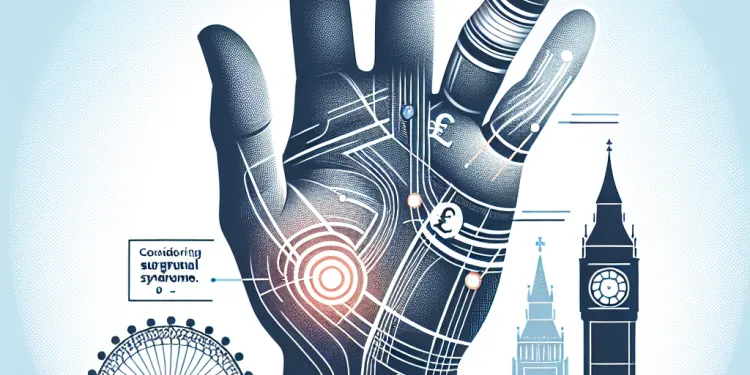
When should I consider surgery for Carpal Tunnel Syndrome?
Relevance: 78%
-

Are there specific exercises that can help with Carpal Tunnel Syndrome?
Relevance: 76%
-

What does Carpal Tunnel Syndrome surgery involve?
Relevance: 76%
-

What are the common symptoms of Carpal Tunnel Syndrome?
Relevance: 70%
-

Can I work or continue sports activities if I have Carpal Tunnel Syndrome?
Relevance: 70%
-

Can lifestyle changes help manage Carpal Tunnel Syndrome?
Relevance: 67%
-

What is the recovery time after Carpal Tunnel Surgery?
Relevance: 57%
-
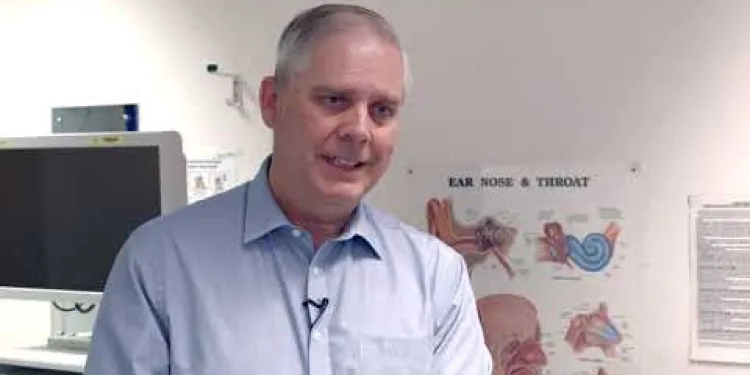
Evidence-Based Interventions: tonsillectomy for recurrent tonsillitis surgery
Relevance: 30%
-

Can testicular cancer recur after treatment?
Relevance: 26%
-

Prader-Willi Syndrome | NHS
Relevance: 26%
-

What is Cushing's syndrome?
Relevance: 25%
-

Can postnatal depression recur after treatment?
Relevance: 25%
-

Munchausen's syndrome | NHS
Relevance: 25%
-

What role do infections play in chronic fatigue syndrome?
Relevance: 24%
-

What is complex sleep apnea syndrome?
Relevance: 23%
-
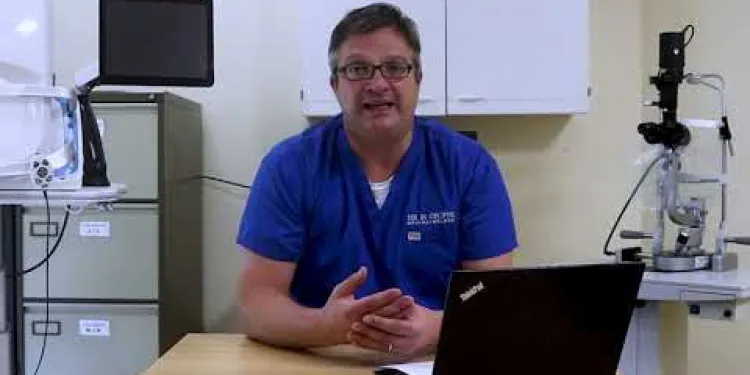
Charles Bonnet Syndrome
Relevance: 23%
-

Turner syndrome: Beyond the classic XO phenotype
Relevance: 23%
-

Greater trochanteric pain syndrome
Relevance: 23%
-

Is chronic fatigue syndrome contagious?
Relevance: 23%
-

What is complex sleep apnea syndrome?
Relevance: 23%
-

What causes chronic fatigue syndrome?
Relevance: 22%
-

About irritable bowel syndrome (IBS)
Relevance: 22%
-

What is chronic fatigue syndrome?
Relevance: 22%
-
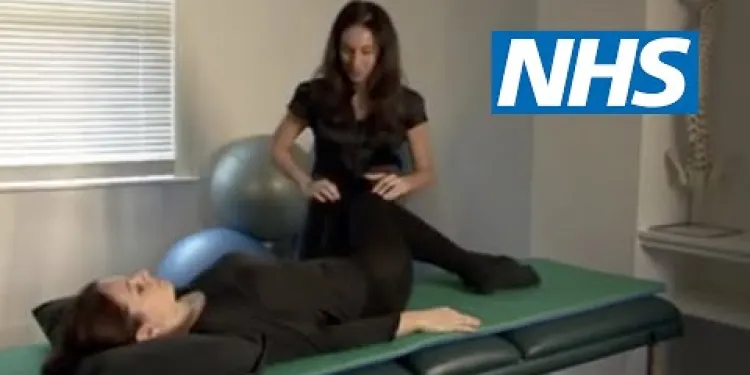
Exercises for sciatica: piriformis syndrome | NHS
Relevance: 22%
-

What is congenital rubella syndrome?
Relevance: 21%
-

Is chronic fatigue syndrome a mental illness?
Relevance: 21%
-

Having a child with Down's syndrome | NHS
Relevance: 21%
-
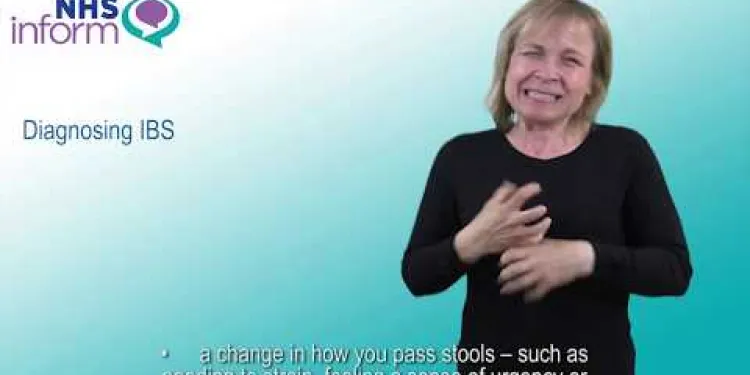
Diagnosing irritable bowel syndrome (IBS)
Relevance: 21%
-

Down's syndrome: Emily's story | NHS
Relevance: 21%
-

Having a child with Edwards' syndrome (trisomy 18) | NHS
Relevance: 20%
-

Building Understanding and Supporting Your Child with Tourette’s Syndrome/Tics
Relevance: 20%
Understanding Carpal Tunnel Syndrome
Carpal Tunnel Syndrome (CTS) is a common condition that affects the hand and wrist. It occurs when the median nerve, which runs from the forearm into the palm of the hand, becomes compressed or squeezed at the wrist. This can lead to symptoms such as pain, numbness, and tingling in the hand and arm. CTS can significantly affect daily activities, making it an important condition to address.
Treatment Options for Carpal Tunnel Syndrome
Treatment for Carpal Tunnel Syndrome varies depending on the severity of the condition. Initial approaches may include wrist splinting, nonsteroidal anti-inflammatory drugs (NSAIDs), and corticosteroid injections to reduce inflammation and relieve pressure on the median nerve. In more severe cases, surgical intervention, such as carpal tunnel release surgery, may be necessary. This procedure involves cutting the ligament pressing on the median nerve to relieve pressure.
Potential for Recurrence
One concern for those who have undergone treatment for Carpal Tunnel Syndrome is the possibility of recurrence. Recurrence refers to the return of symptoms after a period of relief following treatment. The likelihood of CTS recurring depends on several factors, including the type of treatment received, the patient's lifestyle, and any underlying health conditions.
Recurrence After Conservative Treatment
For individuals who have received conservative treatments such as splinting or medication, the risk of recurrence exists if the underlying causes are not addressed. Patients who continue activities that strain the wrist and hand without making ergonomic adjustments may experience a return of symptoms. Regular follow-up with healthcare providers and lifestyle modifications can mitigate this risk.
Recurrence After Surgery
Even after surgical intervention, there is a possibility of recurrence. Some studies suggest that around 10-30% of patients might experience recurring symptoms. This can occur due to incomplete release of the transverse carpal ligament, scar tissue formation, or the natural progression of underlying conditions such as arthritis. It is also important to consider that improper post-surgical rehabilitation can impact the effectiveness of the surgery.
Preventing Recurrence
Preventing the recurrence of Carpal Tunnel Syndrome involves a combination of strategies. Maintaining ergonomic practices, such as proper wrist positioning during repetitive tasks and using supportive hand splints, can be beneficial. Strengthening exercises and stretching may also help keep the median nerve less compressed. Additionally, managing contributing health conditions, such as diabetes or thyroid dysfunction, can decrease the risk of symptom return.
Conclusion
While Carpal Tunnel Syndrome can recur after treatment, understanding the factors that influence recurrence and taking proactive steps can greatly reduce the risk. Patients are encouraged to work closely with their healthcare providers to develop a comprehensive management and prevention plan that addresses their individual needs. Through lifestyle modifications and proper medical guidance, many individuals can continue to enjoy relief from Carpal Tunnel Syndrome symptoms.
Understanding Carpal Tunnel Syndrome
Carpal Tunnel Syndrome (CTS) is a problem that affects your hand and wrist. It happens when the median nerve, which goes from your arm to your hand, gets squeezed at the wrist. This can make your hand and arm feel painful, numb, or tingly. CTS can make it hard to do everyday things, so it is important to treat it.
Treatment Options for Carpal Tunnel Syndrome
How you treat Carpal Tunnel Syndrome depends on how bad it is. At first, you might try wearing a wrist splint, taking medicine like ibuprofen, or getting a special injection to help with pain and swelling. If it's really bad, you might need surgery. The surgery is called carpal tunnel release, and it helps by taking pressure off the nerve.
Potential for Recurrence
Sometimes, the symptoms of Carpal Tunnel Syndrome can come back even after treatment. This is called recurrence. Whether it comes back depends on things like the type of treatment, how you live your life, and other health issues you might have.
Recurrence After Conservative Treatment
If you had simple treatments like wearing a splint or taking medicine, the symptoms might come back if you don't fix what caused the problem. If you keep doing things that strain your wrist and hand, the symptoms can return. Seeing your doctor regularly and changing how you do things can help prevent this.
Recurrence After Surgery
Even after surgery, some people find their symptoms return. About 10-30% of people might feel symptoms again. This can be because of things like not fully releasing the ligament during surgery, scar tissue, or other health issues like arthritis. Doing exercises after surgery the right way is important for recovery.
Preventing Recurrence
To stop Carpal Tunnel Syndrome from coming back, you can try different things. Practice good habits, like keeping your wrist in a good position during activities and using hand supports. Exercises and stretches can keep the nerve from being squeezed. Also, taking care of other health issues like diabetes can help reduce the risk.
Conclusion
Carpal Tunnel Syndrome can sometimes come back after treatment. But if you know what might cause it to return and take steps to prevent it, you can lower the risk. Work with your doctor to make a plan that helps you. By changing your habits and following your doctor's advice, you can often keep Carpal Tunnel Syndrome away.
Frequently Asked Questions
Can Carpal Tunnel Syndrome recur after treatment?
Yes, Carpal Tunnel Syndrome can recur after treatment, especially if the risk factors or activities contributing to the condition are not addressed.
Are there specific treatments that prevent Carpal Tunnel Syndrome from recurring?
Treatments such as lifestyle modifications, ergonomic adjustments, and physical therapy can help prevent recurrence, though they do not guarantee it.
How often does Carpal Tunnel Syndrome recur after surgery?
Recurrence rates after surgery vary but are generally low. However, some people may experience symptoms again over time.
Can non-surgical treatments for Carpal Tunnel Syndrome lead to recurrence?
Non-surgical treatments, such as splinting or corticosteroid injections, may offer temporary relief but do not address the underlying cause, potentially leading to recurrence.
Is recurrence of Carpal Tunnel Syndrome more common in certain individuals?
Yes, individuals with jobs or hobbies involving repetitive hand movements, or those with health conditions like diabetes or arthritis, may be more prone to recurrence.
What role do lifestyle changes play in preventing the recurrence of Carpal Tunnel Syndrome?
Lifestyle changes, such as reducing repetitive wrist activities and maintaining proper wrist ergonomics, can significantly reduce the risk of recurrence.
How effective is physical therapy in preventing the recurrence of Carpal Tunnel Syndrome?
Physical therapy can strengthen the wrist and improve flexibility, potentially reducing the likelihood of recurrence by addressing contributing factors.
Can wearing a wrist splint prevent the recurrence of Carpal Tunnel Syndrome?
Wearing a wrist splint, particularly at night, can help maintain hand positioning and potentially reduce the strain that might lead to recurrence.
What are the signs that Carpal Tunnel Syndrome might be recurring?
Symptoms such as numbness, tingling, or pain in the hand and wrist can indicate recurrence of Carpal Tunnel Syndrome.
Can repetitive stress cause Carpal Tunnel Syndrome to recur even after successful treatment?
Yes, repetitive stress from activities that strain the wrist can lead to the return of symptoms even after successful treatment.
Is Carpal Tunnel Syndrome recurrence preventable?
While recurrence can sometimes be prevented by addressing risk factors and modifying activities, it is not always possible to completely prevent it.
What should I do if I notice symptoms of Carpal Tunnel Syndrome returning?
Consult with a healthcare professional if symptoms return. They may recommend further treatment or lifestyle changes.
Can weight management impact the recurrence of Carpal Tunnel Syndrome?
Yes, maintaining a healthy weight can reduce pressure on the carpal tunnel, potentially lowering the risk of recurrence.
Is it common for Carpal Tunnel Syndrome to recur after steroid injections?
Yes, symptoms may recur after steroid injections as they primarily provide temporary relief rather than a permanent solution.
How important is ergonomics in preventing Carpal Tunnel Syndrome recurrence?
Ergonomics play a crucial role in preventing recurrence by ensuring that the wrists are not subjected to undue stress.
Can strengthening exercises help in avoiding recurrence of Carpal Tunnel Syndrome?
Yes, exercises that strengthen the hand and wrist can improve resilience against stress, potentially preventing recurrence.
What is the likelihood of Carpal Tunnel Syndrome recurring after endoscopic surgery?
Recurrence rates after endoscopic surgery are generally low, but recurrence can occur if underlying causes are not addressed.
Are there specific occupations with higher recurrence rates of Carpal Tunnel Syndrome?
Yes, occupations involving repetitive hand movements, such as assembly line work or prolonged computer use, have higher recurrence rates.
Does pregnancy-related Carpal Tunnel Syndrome tend to recur?
Pregnancy-related Carpal Tunnel Syndrome often resolves after childbirth, but recurrence can occur in subsequent pregnancies.
Can using ergonomic keyboards or mouse devices help prevent Carpal Tunnel Syndrome recurrence?
Yes, ergonomic devices can support proper hand positioning and reduce the strain that might contribute to recurrence.
Can Carpal Tunnel Syndrome come back after treatment?
Carpal Tunnel Syndrome is a problem where your hand can feel numb or tingly. It can happen when a nerve in your wrist gets squished.
Sometimes, even after treatment, the problem can come back. This means your hand might feel numb or tingly again.
If it comes back, it's a good idea to talk to a doctor. They can help you find ways to feel better.
Using tools like a wrist brace or doing special hand exercises might help keep your hand feeling good.
Yes, Carpal Tunnel Syndrome can come back after treatment. This can happen if the things that cause it are not changed or fixed.
Can we stop Carpal Tunnel Syndrome from coming back?
Carpal Tunnel Syndrome is when your hand and wrist hurt or feel numb. There are things you can do to help stop it from happening again.
Here are some ways to help:
- Rest your hands when they get tired.
- Use a wrist splint at night to keep your hand straight.
- Do easy hand exercises.
- Stop doing things that hurt your wrist.
Ask a doctor or therapist for help if you feel pain. They can show you how to take care of your hands. It's good to learn the right way to use your hands and tools, so you don't hurt them.
A computer program or app might help remind you to rest your hands.
There are things you can do to feel better. You can change some habits, use furniture that helps your body, and do special exercises. These things might stop the problem from coming back, but they can't promise it won't happen again.
How often does Carpal Tunnel Syndrome come back after surgery?
Carpal Tunnel Syndrome is a problem with your hand or wrist. Sometimes, people have surgery to help it get better.
We want to know if it comes back after the surgery. That means, does the pain or tingling in your hand or wrist start again?
If you or someone you know had this surgery, it is good to talk to a doctor if you feel the pain again. The doctor can help you understand what to do next.
You can use pictures or a notebook to keep track of how your hand feels each day. This can help the doctor see when symptoms started again.
Using a calendar to mark days when your hand hurts can also be helpful.
After an operation, it is not common for problems to come back. But, some people might feel the same problems again after a while.
Can Carpal Tunnel Syndrome come back if you don't have surgery?
Non-surgical treatments like using a splint or getting special injections might help for a short time. But these do not fix the main problem, so the issue might come back.
Do some people get Carpal Tunnel Syndrome again?
Carpal Tunnel Syndrome is a hand and wrist problem. Some people might get it again after they had it before.
If you think you have this problem:
- Talk to a doctor.
- Use a special wrist brace to help your wrist stay straight.
- Try squeezing a soft ball to make your hands stronger.
Yes, people who have jobs or hobbies that make them use their hands a lot, or people who have health problems like diabetes or arthritis, might have this problem happen again.
How can changing your life help stop Carpal Tunnel Syndrome from coming back?
You can help your wrist feel better by making some changes to your daily life. Try to do these things:
- Do not do the same wrist movements over and over.
- Keep your wrist in a comfy position when you use it.
These things can help your wrist stay healthy.
If you find reading hard, you can use apps that read text out loud or make the text bigger.
Does physical therapy help stop Carpal Tunnel from coming back?
Physical therapy helps to make your wrist stronger and more flexible. This means it can move better. Doing this might stop problems from happening again.
Here’s how you can do it:
- Work with a physical therapist. They will show you easy exercises.
- Do these exercises regularly at home.
- Ask someone to help you if you find it hard.
- Try using special tools, like a squeeze ball or stretchy band.
Can wearing a wrist splint stop Carpal Tunnel Syndrome from coming back?
Carpal Tunnel Syndrome is when your wrist hurts or feels tingly. Wearing a wrist splint can help your wrist stay in a good position. This might stop the pain or tingly feeling from coming back.
To help understand more, you can:
- Ask a doctor for advice.
- Use pictures to see how a wrist splint works.
- Watch videos about Carpal Tunnel Syndrome.
Wearing a wrist splint, especially when you sleep, can help keep your hand in a good position. This might stop the pain from coming back.
How can you tell if Carpal Tunnel Syndrome is coming back?
Here are some signs:
- Your hand or fingers feel tingly or numb.
- Your wrist, hand, or fingers feel weak.
- You have pain in your wrist or hand.
Tools that might help:
- Wrist splints can support your wrist.
- Special keyboards and mouse pads can reduce strain.
- Take regular breaks to rest your hands.
If your hand or wrist feels numb, tingly, or hurts, it might be Carpal Tunnel Syndrome coming back.
Can doing the same thing over and over make Carpal Tunnel come back after it is treated?
Yes, doing the same things that hurt your wrist can make it hurt again, even after it gets better.
Can Carpal Tunnel Syndrome come back?
Carpal Tunnel Syndrome can come back for some people. But there are ways to help stop it from coming back.
Here are some things you can try:
- Take Breaks: Rest your hands often, especially if you do the same movements a lot.
- Hand Exercises: Do gentle exercises to keep your hands and wrists strong.
- Use Support: Wear a wrist splint if recommended by a doctor.
If you feel pain or your fingers tingle, talk to a doctor or a therapist.
Sometimes we can stop a problem from happening again. We do this by being careful and changing what we do. But it is not always possible to stop it every time.
What should I do if my Carpal Tunnel symptoms come back?
If your hand or wrist starts hurting again, tell a doctor. They can help. Use a splint on your wrist to stop it from bending too much.
Take breaks when you use your hands a lot. This can help your wrists rest.
Try stretching your fingers, hands, and wrists gently. It can help them feel better.
There are videos online that show good stretches for your hands. Ask someone to help you find them.
If the pain is bad, try putting ice on your wrist for a little while. This can help with swelling.
Remember to tell a grown-up if your hands hurt. They can help you get the right care.
Talk to a doctor or nurse if you start to feel bad again. They can help you with more treatment or suggest new things to do in your life.
Can keeping a healthy weight help stop Carpal Tunnel Syndrome from coming back?
Keeping a healthy weight can help make your wrist feel better. It might stop the pain in your wrist from coming back.
Do steroid injections for Carpal Tunnel Syndrome often stop working?
Carpal Tunnel Syndrome is when your hand and fingers can hurt or feel tingly because of a nerve problem. Sometimes doctors give special medicine called steroid injections to help with the pain.
But sometimes, the pain can come back after a while. This can happen to some people, but not everyone. If your hand starts hurting again, it's a good idea to tell your doctor. They can help you find other ways to feel better.
Using tools like wrist braces or doing special exercises might also help your hands feel better.
Yes, symptoms can come back after getting steroid injections. This is because steroid injections help you feel better for a little while, but they do not fix the problem forever.
How does using things in a good way help stop Carpal Tunnel from coming back?
Using things in a safe and comfy way is very important. This is called ergonomics.
It helps stop Carpal Tunnel Syndrome from coming back. Carpal Tunnel hurts your hands and wrists.
Here’s how you can help:
- Keep your hands and wrists straight.
- Use a soft mouse pad for your computer.
- Take breaks often when using a computer or writing.
- Do hand and finger stretches.
These things can help keep your hands healthy and pain-free.
Ergonomics is about making sure things are safe and comfortable. This helps stop problems from coming back. It's important to keep your wrists safe and not put too much pressure on them.
Can exercises make Carpal Tunnel Syndrome come back less?
Yes, doing exercises to make your hands and wrists stronger can help them handle stress better. This might stop problems from coming back.
Will Carpal Tunnel Syndrome come back after endoscopic surgery?
When doctors do surgery with a camera and small tools, things usually don’t come back. But if the main problem isn’t fixed, it can come back.
Do certain jobs make Carpal Tunnel Syndrome come back more often?
Yes, jobs where you do the same hand movements over and over, like working on an assembly line or using a computer for a long time, can make the problem happen again more often.
If you have trouble reading, you can try these tools:
- Text-to-speech apps can read the words out loud for you.
- Highlighter pens can help you focus on one line at a time.
- Ask someone to read with you if you need help.
Does Carpal Tunnel Syndrome come back after pregnancy?
Carpal Tunnel Syndrome is when your hand feels tingly or numb. It can happen when you are pregnant.
Sometimes, after the baby is born, it goes away. But it can come back.
If you are worried, talk to a doctor. They can help you know what to do next.
Try using a wrist splint to help your hand feel better. Stretching exercises can also help.
When you have a baby in your tummy, you might get something called Carpal Tunnel Syndrome. It can make your hands hurt or feel tingly. This usually goes away after you have your baby. But it might come back if you have another baby later.
Can special keyboards or mice help stop Carpal Tunnel Syndrome from coming back?
Using special keyboards and mice can help make your hands and wrists feel better. They can stop pain from coming back.
Here are some things that can help:
- Special keyboards that are easy to type on.
- Mice that fit your hand shape.
- Take breaks when using the computer.
- Stretch your hands and wrists often.
Yes, special tools can help you use your hands the right way and stop them from getting sore or tired.
Useful Links
- Ergsy carfully checks the information in the videos we provide here.
- Videos shown by Youtube after a video has completed, have NOT been reviewed by ERGSY.
- To view, click the arrow in centre of video.
- Most of the videos you find here will have subtitles and/or closed captions available.
- You may need to turn these on, and choose your preferred language.
- Go to the video you'd like to watch.
- If closed captions (CC) are available, settings will be visible on the bottom right of the video player.
- To turn on Captions, click settings .
- To turn off Captions, click settings again.
More Items From Ergsy search
-

Can Carpal Tunnel Syndrome recur after treatment?
Relevance: 100%
-

Carpal Tunnel Syndrome
Relevance: 92%
-

Are there any alternative treatments for Carpal Tunnel Syndrome?
Relevance: 87%
-

Is Carpal Tunnel Syndrome covered by the NHS?
Relevance: 86%
-

What non-surgical treatments are available for Carpal Tunnel Syndrome?
Relevance: 85%
-

What causes Carpal Tunnel Syndrome?
Relevance: 84%
-

What is Carpal Tunnel Syndrome (CTS)?
Relevance: 83%
-

How is Carpal Tunnel Syndrome diagnosed?
Relevance: 83%
-

How can I prevent Carpal Tunnel Syndrome?
Relevance: 79%
-

When should I consider surgery for Carpal Tunnel Syndrome?
Relevance: 78%
-

Are there specific exercises that can help with Carpal Tunnel Syndrome?
Relevance: 76%
-

What does Carpal Tunnel Syndrome surgery involve?
Relevance: 76%
-

What are the common symptoms of Carpal Tunnel Syndrome?
Relevance: 70%
-

Can I work or continue sports activities if I have Carpal Tunnel Syndrome?
Relevance: 70%
-

Can lifestyle changes help manage Carpal Tunnel Syndrome?
Relevance: 67%
-

What is the recovery time after Carpal Tunnel Surgery?
Relevance: 57%
-

Evidence-Based Interventions: tonsillectomy for recurrent tonsillitis surgery
Relevance: 30%
-

Can testicular cancer recur after treatment?
Relevance: 26%
-

Prader-Willi Syndrome | NHS
Relevance: 26%
-

What is Cushing's syndrome?
Relevance: 25%
-

Can postnatal depression recur after treatment?
Relevance: 25%
-

Munchausen's syndrome | NHS
Relevance: 25%
-

What role do infections play in chronic fatigue syndrome?
Relevance: 24%
-

What is complex sleep apnea syndrome?
Relevance: 23%
-

Charles Bonnet Syndrome
Relevance: 23%
-

Turner syndrome: Beyond the classic XO phenotype
Relevance: 23%
-

Greater trochanteric pain syndrome
Relevance: 23%
-

Is chronic fatigue syndrome contagious?
Relevance: 23%
-

What is complex sleep apnea syndrome?
Relevance: 23%
-

What causes chronic fatigue syndrome?
Relevance: 22%
-

About irritable bowel syndrome (IBS)
Relevance: 22%
-

What is chronic fatigue syndrome?
Relevance: 22%
-

Exercises for sciatica: piriformis syndrome | NHS
Relevance: 22%
-

What is congenital rubella syndrome?
Relevance: 21%
-

Is chronic fatigue syndrome a mental illness?
Relevance: 21%
-

Having a child with Down's syndrome | NHS
Relevance: 21%
-

Diagnosing irritable bowel syndrome (IBS)
Relevance: 21%
-

Down's syndrome: Emily's story | NHS
Relevance: 21%
-

Having a child with Edwards' syndrome (trisomy 18) | NHS
Relevance: 20%
-

Building Understanding and Supporting Your Child with Tourette’s Syndrome/Tics
Relevance: 20%


